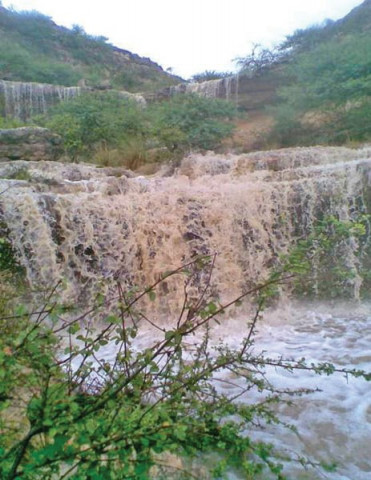
While development along our coast is mostly non-conducive to promoting environmentally sound recreational spaces and activities, no one has even considered the potential of developing a waterfront along the two perennial bodies - the Malir and Lyari rivers. For one thing, both these water bodies are carriers of most of the city's sewage.
Take the case of Malir River for instance: it is a non-perennial stream traversing through the city and draining into the Arabian Sea. It is formed by the confluence of Mol and Khadeji tributaries at a distance of 30 miles north of Karachi city. Compared to the Lyari river, the Malir river has a greater availability of freshwater. The latter also sees an increased flow due to wastewater discharges. It supports water holes and ponds in hilly outcrop regions.
Any waterfront development project along Malir River would have to fit into the larger context of a comprehensive 'Malir River Basin Management Plan', looking into the wider aspects of the issue, particularly the impact of land-related activities.
The stream exhibits high levels of pollution due to various types of unregulated human activities taking place along its banks and in the vicinity of the Malir estuary. Untreated domestic and industrial wastewater discharges, solid waste dumping, agricultural runoff and soil erosion are all sources of pollution in the river. These sources adversely affect the freshwater ecology and wetlands, both in the upper reaches of Malir River and in the Malir estuary. The estuary, for now, still supports the wetland ecosystems such as mangrove forests but its characteristics are being modified due to land reclamation practices in the vicinity.
Despite all these obvious constraints, however, it is felt that there is sufficient justification for exploring the possibility of a 'recreation-based waterfront development' along this water body. This will indirectly also help preserve whatever is left of its ecological bio-diversity.
Firstly, there is the need to consider the Malir river and estuarine wetland ecology as an integrated ecosystem and ensure the involvement of relevant stakeholders. The status of the existing research and documentation has to be assessed and updated. Identification of critical knowledge gaps can point to areas for generation of appropriate social and ecological data.
The viable wetland ecology in separate sections of the Malir river and estuary need to be identified and the local communities can be involved to act as 'environmental stewards'. Field surveys would be able to identify viable wetland ecosystems, both in the riverine stretch and in the estuary. While the estuary's ecosystems are known to exist, artificial riverine ecological systems can also be created by using advanced technology for the treatment of wastewater and augmentation of the water flow.
Such actions can, however, only be taken if the Malir and Lyari rivers are seen as viable riverine ecosystems, rather than the sewer drains they are currently perceived to be. This has to be followed by further research and documentation to lay the basis of a 'River Basin Rehabilitation Programme' and more importantly, recognising the requirement of assessing the river body as an ecosystem. The associated benefits include appropriately managed resettlement of human settlements, presently encroaching the riverbed, restoration of natural wetland ecosystems with effective monitoring and guardianship by local communities, treatment and safe discharge of industrial effluents into the river, flow augmentation and river-front development strategies to be implemented within the ambit of appropriate policy and planning requirements.
Farhan Anwar is an urban planner and runs a non-profit organisation based in Karachi city focusing on urban sustainability issues fanwar@sustainableinitiatives.org.pk
Published in The Express Tribune, April 21st, 2014.


















COMMENTS
Comments are moderated and generally will be posted if they are on-topic and not abusive.
For more information, please see our Comments FAQ